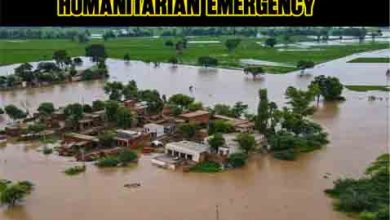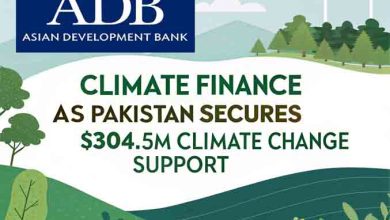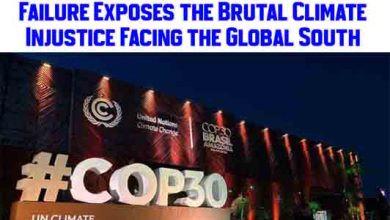Devastating Economic Blow: Pakistan Climate Change GDP Loss Predicted by World Bank
The World Bank warns that Pakistan may lose up to 9% of its GDP by 2050 due to climate change. Learn how urban transport inefficiencies and lack of climate finance are driving economic risks.
Pakistan climate change GDP loss is no longer a theoretical risk—it’s a looming reality. According to the newly released Country Climate and Development Report by the World Bank, Pakistan is on track to lose between 6.5% to 9% of its GDP by 2050 if aggressive climate action is not taken. The report warns of grave consequences if Pakistan continues business as usual in the face of rising climate threats.
This sobering projection serves as a wake-up call for policy-makers, development planners, and citizens alike. With increasingly frequent floods, heatwaves, and droughts, the nation faces an existential climate challenge with severe economic implications.
World Bank Report Highlights: Climate vs. Economy
The World Bank’s comprehensive Country Climate and Development Report (CCDR) presents alarming statistics on Pakistan’s vulnerability. Not only is the nation among the top ten most climate-vulnerable countries, but it is also experiencing the economic fallout of poor climate resilience today—not just in the distant future.
“By 2050, Pakistan may lose up to 9% of its GDP due to climate change,” the report states, citing both direct damage and indirect systemic disruptions.
These projections are based on climate scenarios that include:
- Temperature rise leading to agricultural collapse
- Water scarcity due to glacial melt and mismanagement
- Increased urban flooding and heat island effects
- Migration pressures due to climate-induced displacement
Urban Transport and GDP Losses
Tauqeer Ahmed Rana, a road safety and urban transport expert, emphasized a less-discussed but critical angle: inefficient urban transport systems. Citing the same World Bank report, he said:
“Alarmingly, Pakistan is currently losing around 6% of its GDP due to inefficient urban transport.”
This inefficiency results in:
- Lost productivity due to traffic congestion
- High fuel consumption and emissions
- Health costs from air pollution
- Increased road accident rates
Efficient transport planning is key to enhancing mobility, reducing emissions, and unlocking urban economic potential.

Alt text: Pakistan climate change GDP loss due to urban transport inefficiencies
Climate Investment Needs: $368 Billion by 2030
Another striking figure from the World Bank report is the estimated $368 billion needed by 2030 for Pakistan to build climate resilience and adapt to the challenges ahead.
This budget would be directed toward:
- Flood defense infrastructure
- Heat-resilient urban planning
- Climate-smart agriculture
- Water conservation and management
- Clean energy transitions
Failure to invest this amount could push the nation into climate-driven economic instability and widen the poverty gap.
The Challenge of Climate Finance
While the numbers are clear, funding gaps remain a massive obstacle. Tauqeer Ahmed Rana warned:
“The harsh reality is that despite committing billions of dollars, whatever meagre funds received so far are mostly in the form of loans rather than grants, further exacerbating Pakistan’s economic crisis.”
Key Issues in Pakistan’s Climate Finance:
- High debt dependency due to conditional loans
- Lack of private sector mobilization
- Low international trust due to governance issues
- Minimal success in accessing loss and damage funds
Pakistan’s appeals at global climate summits, including COP28, have repeatedly called for climate justice and grant-based support, particularly from historic emitters.
Policy Recommendations for Pakistan
To mitigate the looming Pakistan climate change GDP loss, immediate and long-term strategies are needed.
Short-Term:
- Reform urban transport systems for efficiency and reduced emissions
- Improve early warning systems and disaster response
- Launch climate education campaigns and training
Medium to Long-Term:
- Incentivize green energy and public-private partnerships
- Reform water policy to address urban and agricultural needs
- Enhance international climate diplomacy to access fair climate finance
- Build resilient infrastructure, especially in vulnerable areas like Sindh and Balochistan
Conclusion: The Urgent Need for Green Development
The Pakistan climate change GDP loss projection of up to 9% by 2050 is more than a statistic—it is a warning of the price of inaction. Without targeted reforms in transport, infrastructure, and climate resilience, Pakistan stands to lose decades of economic progress.
However, hope remains. With bold leadership, innovative planning, and international cooperation, Pakistan can pivot from climate vulnerability to climate leadership. The time to act is now—before the economic damage becomes irreversible.
References and Resources
- World Bank CCDR Pakistan Report – 2025
- UNEP Climate Adaptation Overview
- COP28 Outcomes – Climate Finance
- Pakistan’s Climate Policy Framework
- Internal Resource: Pakistan Urban Transport Master Plan 2047







